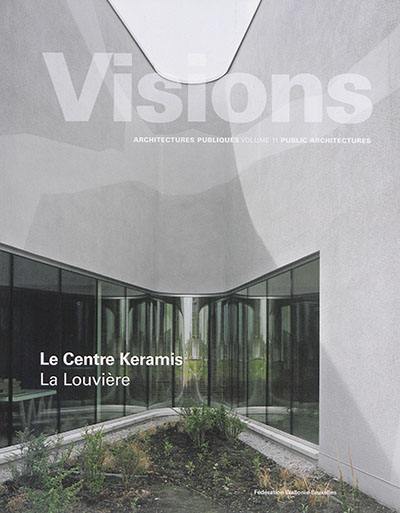
Fiche technique
Format : Broché
Nb de pages : 112 pages
Poids : 360 g
Dimensions : 18cm X 22cm
ISBN : 978-2-930705-11-8
EAN : 9782930705118
Le centre Keramis, La Louvière
Coton-De Visscher-Lelion-Nottebaert-Vincentelli architectes
Quatrième de couverture
La Louvière est l'une de ces villes européennes littéralement façonnées par l'industrie locale : alors simple hameau, elle connaît un formidable essor urbain après l'installation, en 1841, de la Faïencerie Boch. De l'usine de 17 Ha ne subsiste aujourd'hui qu'un atelier de 1000 m2, abritant trois fours bouteilles classés comme monument, qui sont au coeur, au sens propre comme au figuré, du Centre de la Céramique de la Fédération Wallonie-Bruxelles. Bien plus qu'un sanctuaire, riche d'une collection de milliers de pièces, Keramis est avant tout un espace de création, à l'image du magnifique bâtiment conçu par le collectif d'architectes Codelenovi, subtilement capturé par la photographe Marie-Noëlle Boutin.
Fort de son implication humaine avec les anciens travailleurs du site, l'écrivain Daniel Adam ouvre ce livre, suivi par Ludovic Recchia qui a porté l'ambition du projet depuis ses débuts, la doctorante Charlotte Lheureux qui revient sur les enjeux du concours d'architecture, le regard du critique d'architecture Maarten Delbeke, le dessin averti de Jochen Gerner et enfin, le propos de curateur d'art Benoît Dusart autour de l'oeuvre du plasticien Jean Glibert qui a ceint le bâtiment d'une peau morcellée.
La Louvière is one of those European cities literally built by local industry: in the past a simple hamlet, it experienced astounding urban growth after the installation, in 1841, of the Faïencerie Boch (Boch pottery works). Of the 17-hectare plant, today only a 1,000-m2 workshop remains, housing three bottle ovens classified as monuments, which are both literally and figuratively at the heart of the Wallonia-Brussels Ceramics Centre, a project carried out by the Wallonia Heritage Institute. Much more than a sanctuary, rich with a collection of thousands of pieces, Keramis is above all a creative space, like the magnificent building designed by the architects' collective Codelenovi, subtly captured by photographer Marie-Noëlle Boutin.
On the strength of its humanitarian involvement with the former workers at the site, writer Daniel Adam opens this book, followed by Ludovic Recchia, who carried the ambition of the project since its beginning, doctoral candidate Charlotte Lherueux, who reviews the challenges of the architecture competition, the perspective of architecture critic Maarten Delbeke, the shrewd sketch by Jochen Gerner, and lastly, remarks by art curator BD on the work of plastic artist Jean Glibert, who enclosed the building with a broken skin.





